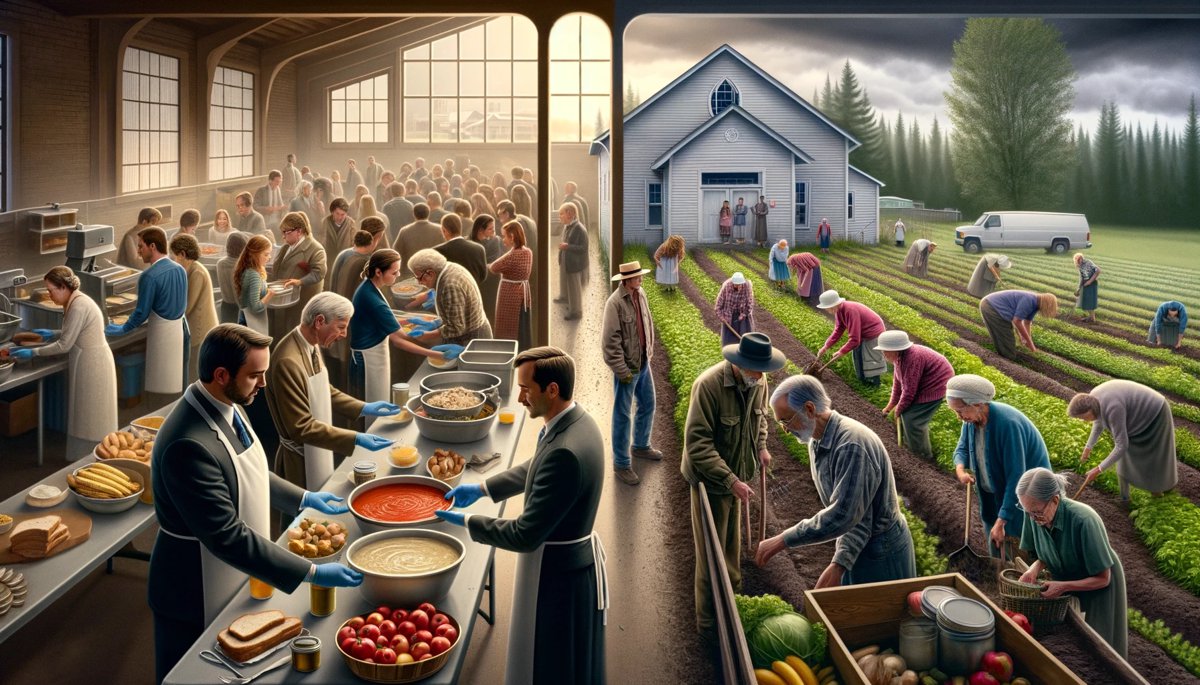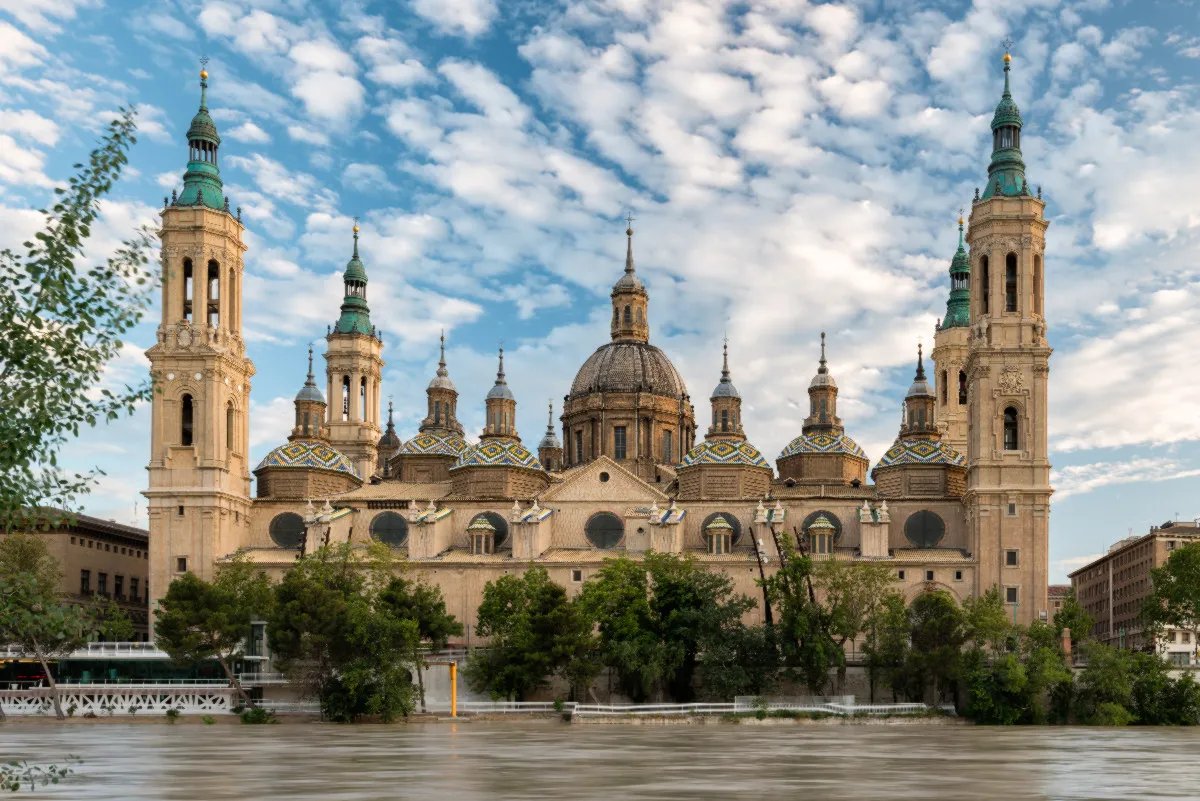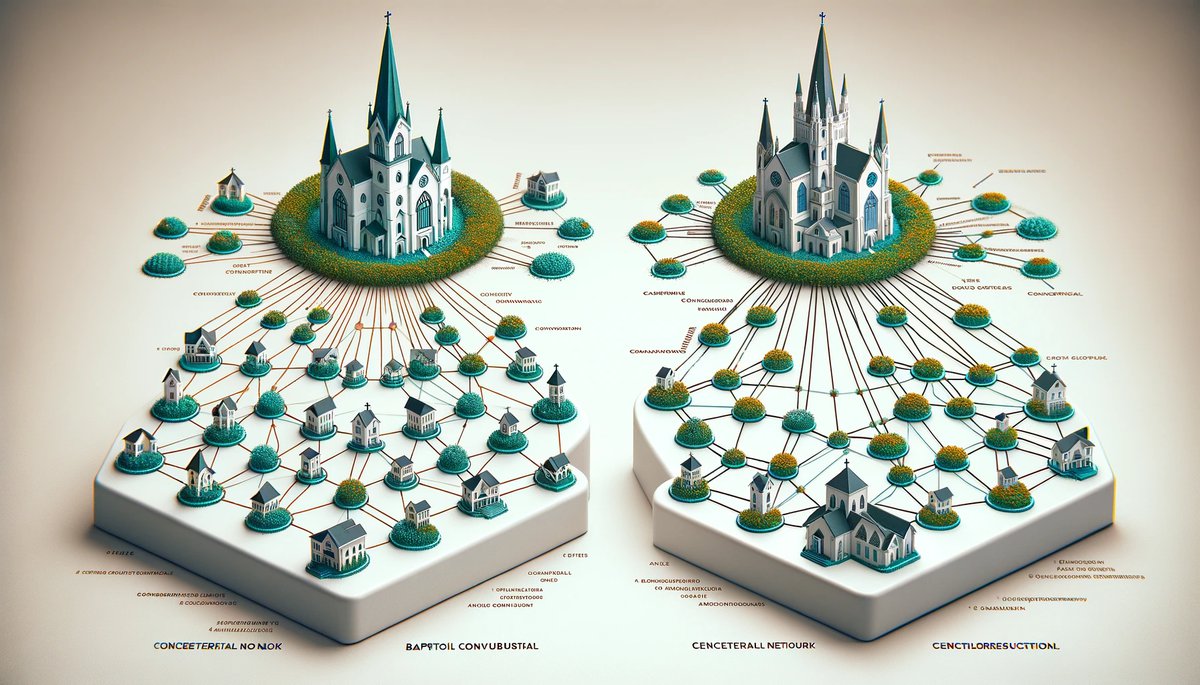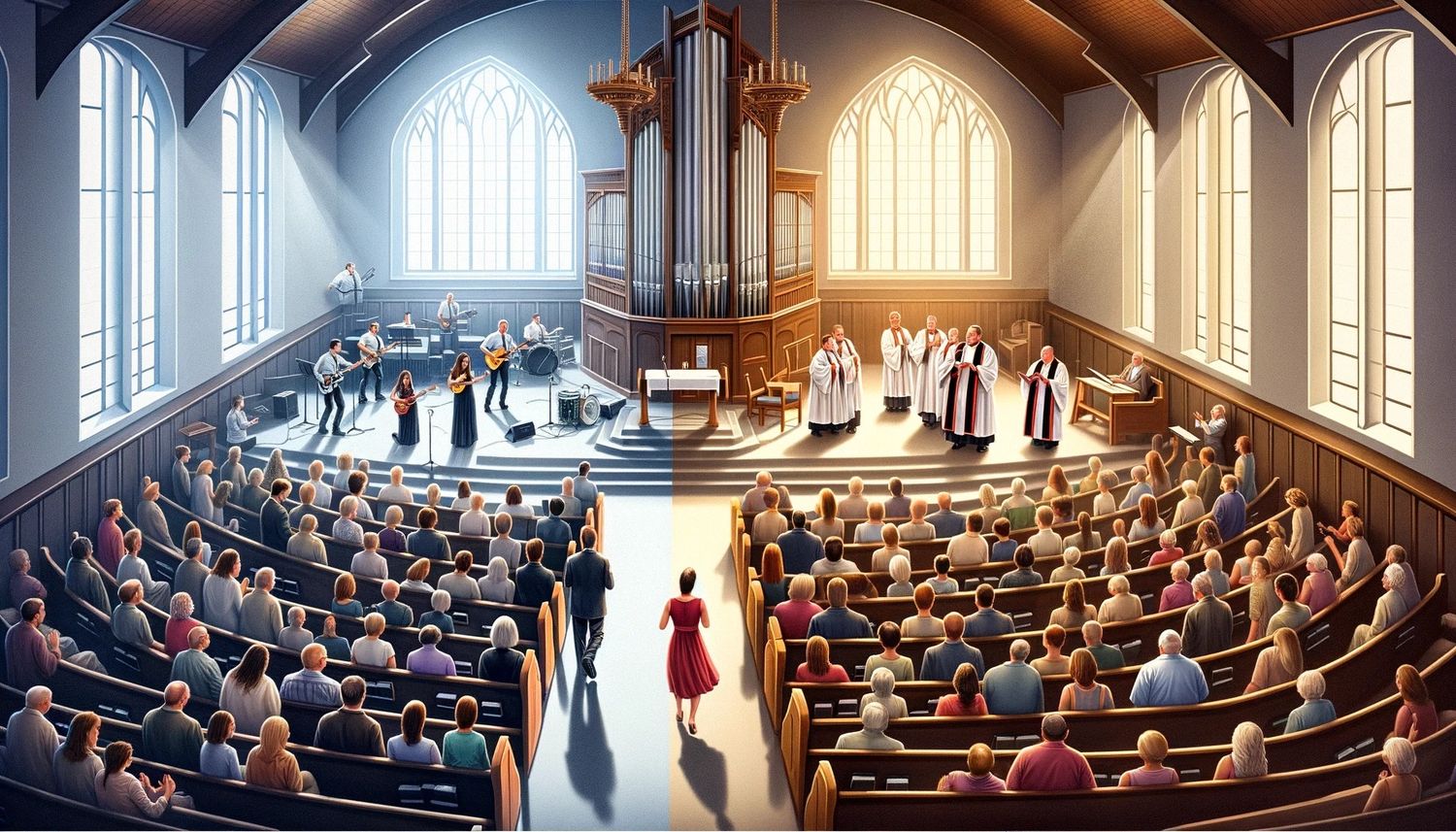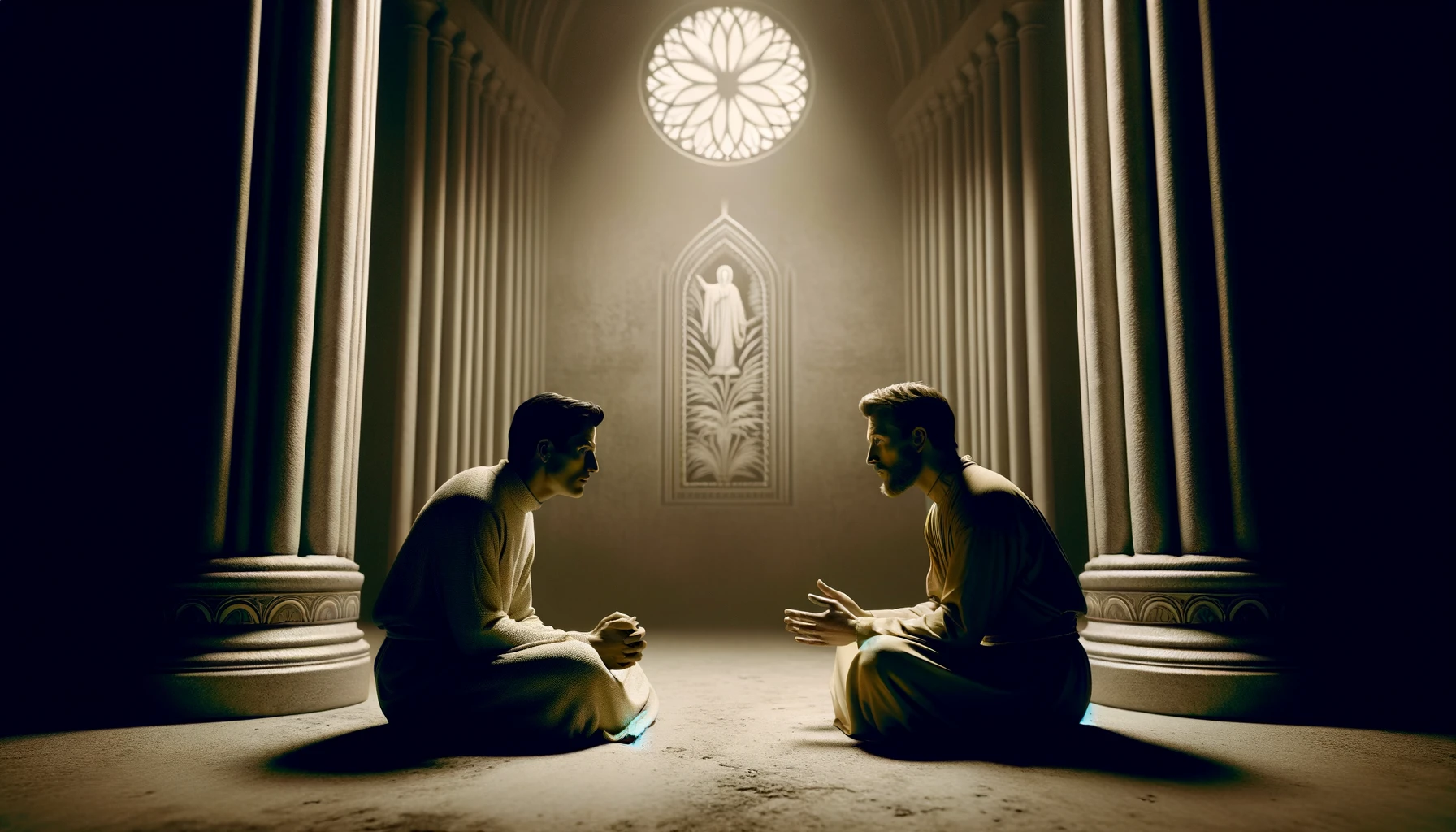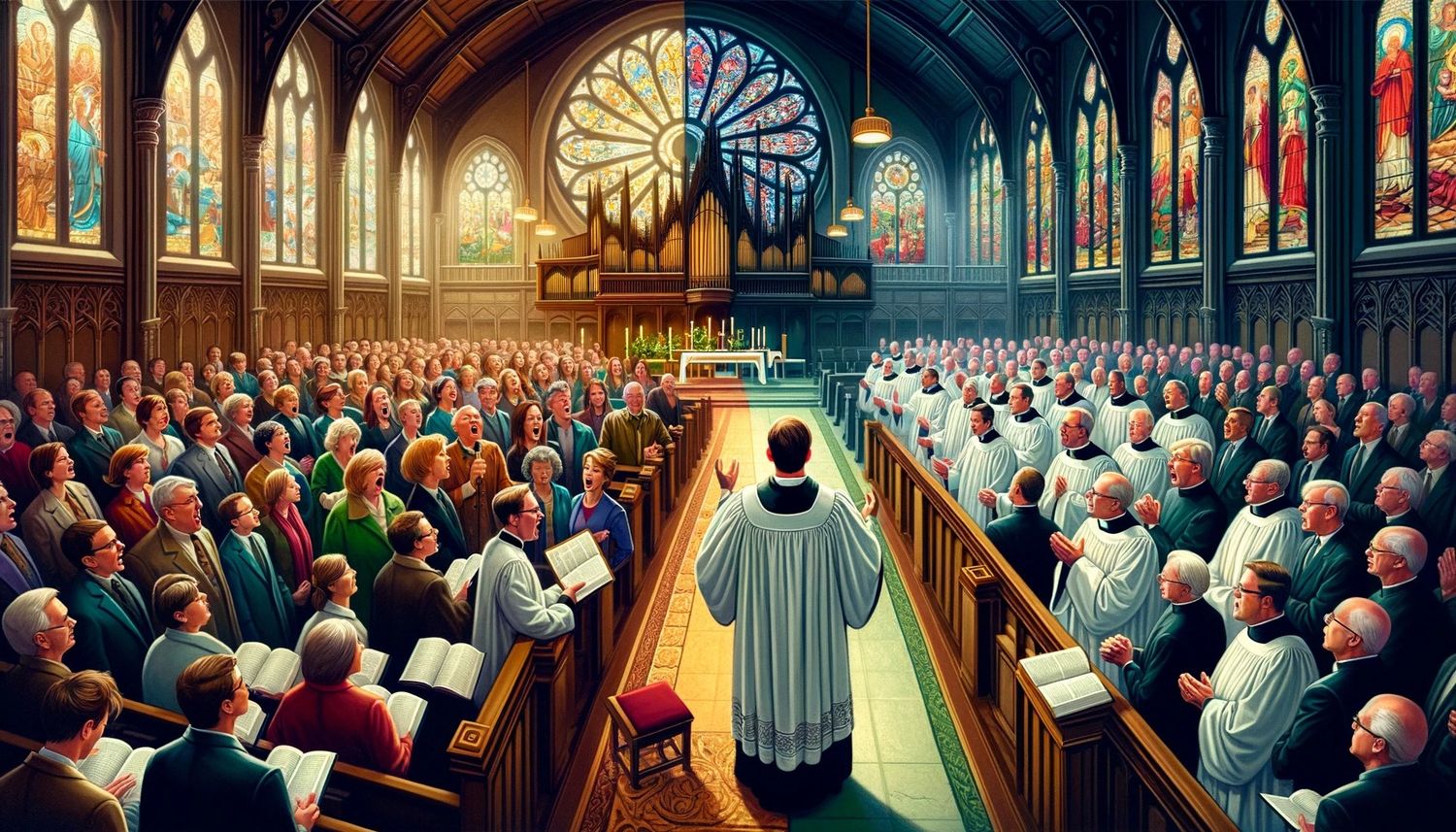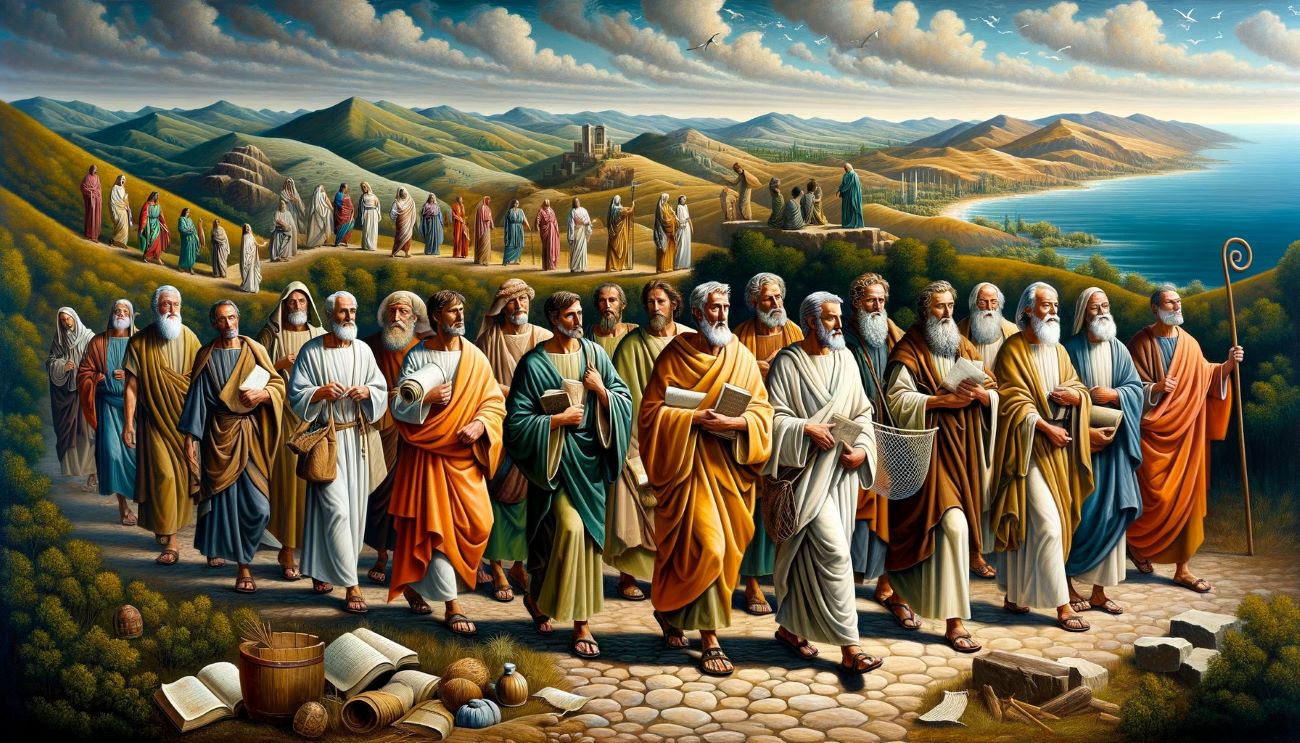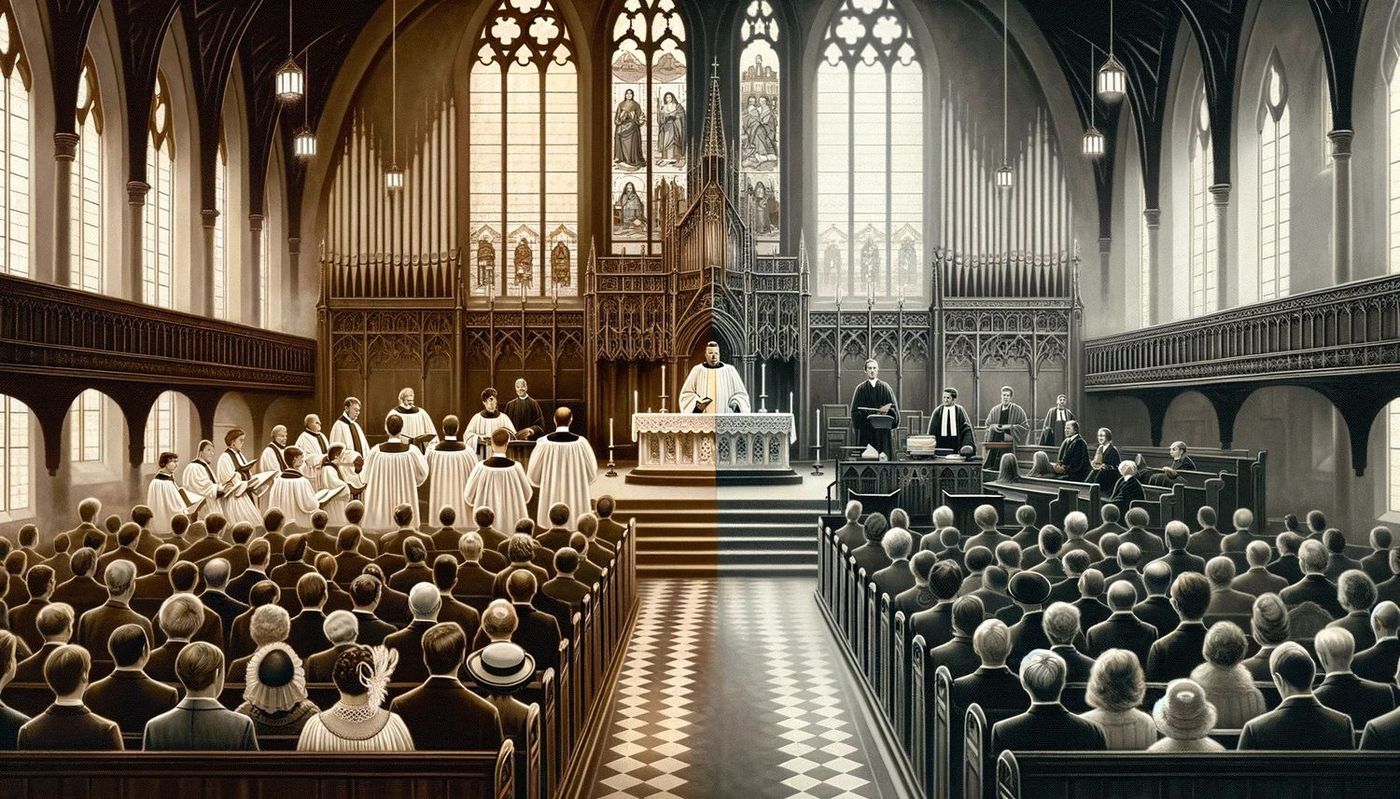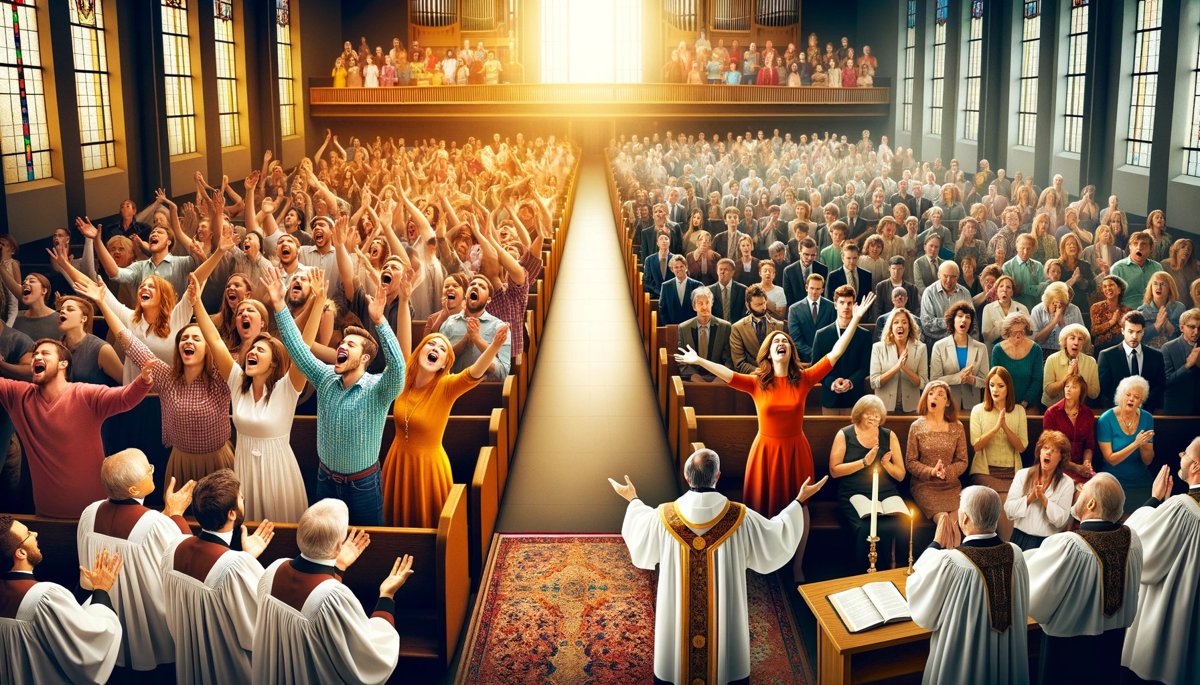Home>Theology and Spirituality>What Is The Difference Between Catholicism And Episcopalianism
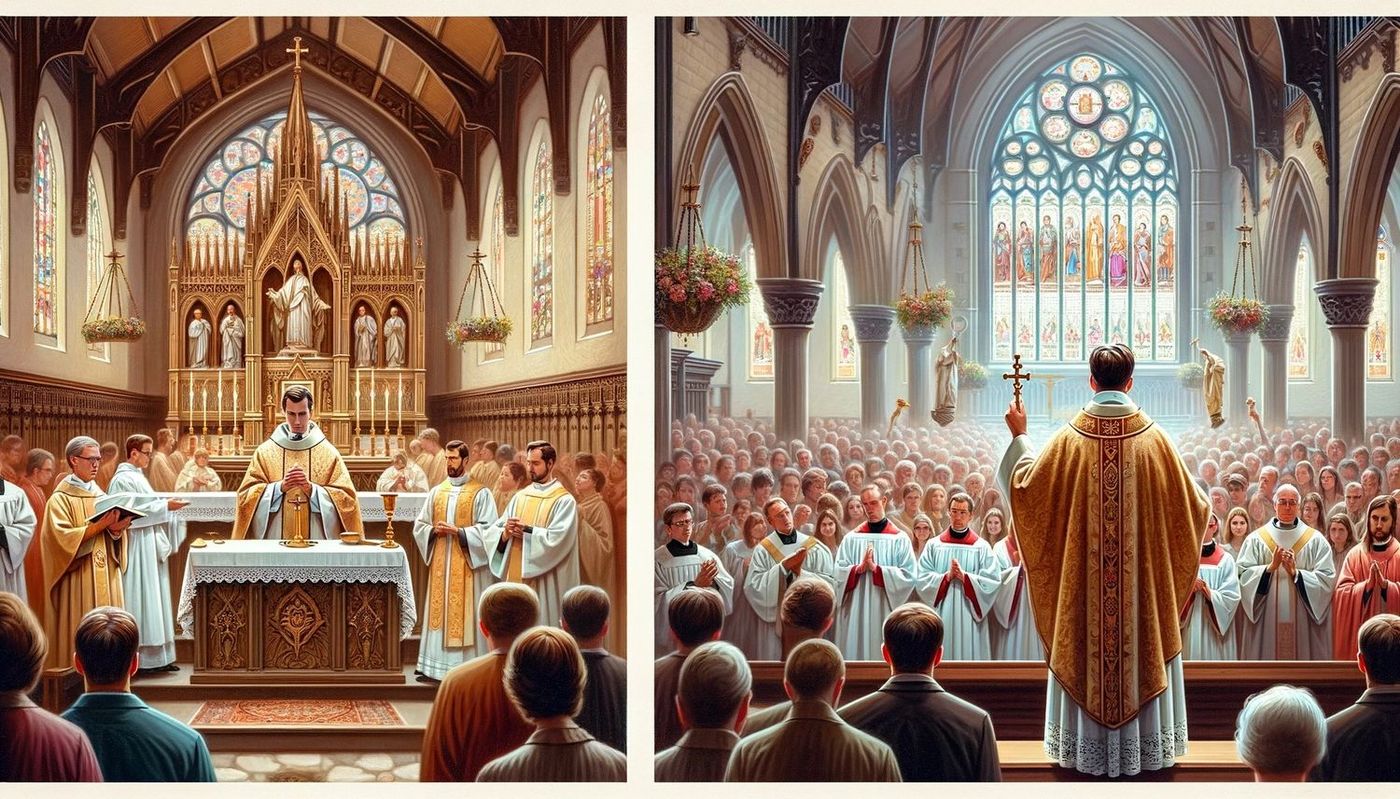

Theology and Spirituality
What Is The Difference Between Catholicism And Episcopalianism
Published: February 18, 2024
Jason DeRose, Managing Editor at Christian.net, uses his expertise in religion and journalism to deepen understanding of faith's societal impacts. His editorial leadership, coupled with a strong academic background, enriches the platform’s diverse content, earning him recognition in both journalism and religious circles.
Discover the key distinctions between Catholicism and Episcopalianism in terms of theology and spirituality. Explore their beliefs, practices, and traditions.
(Many of the links in this article redirect to a specific reviewed product. Your purchase of these products through affiliate links helps to generate commission for Christian.net, at no extra cost. Learn more)
Table of Contents
Introduction
Catholicism and Episcopalianism are two prominent Christian denominations with rich histories and distinct theological traditions. While both share common roots in the early Christian church, they have evolved separately, giving rise to unique beliefs, practices, and organizational structures. Understanding the differences and similarities between these two faith traditions can provide valuable insights into the diverse tapestry of Christianity.
In this comprehensive exploration, we will delve into the historical origins, core beliefs, religious practices, leadership structures, and sacramental differences between Catholicism and Episcopalianism. By examining these aspects, we aim to shed light on the nuanced theological and cultural distinctions that define each tradition. Moreover, we will uncover the common ground that unites these two denominations despite their theological diversity.
As we embark on this journey of discovery, it is essential to approach the subject with an open mind and a spirit of curiosity. By gaining a deeper understanding of Catholicism and Episcopalianism, we can foster greater appreciation for the rich tapestry of Christian faith expressions and the diverse ways in which individuals connect with the divine.
History of Catholicism
The history of Catholicism traces back to the early days of Christianity, with its roots deeply embedded in the teachings of Jesus Christ and the apostles. The term "Catholic" originates from the Greek word "katholikos," meaning "universal," reflecting the faith's mission to encompass all people and cultures.
Catholicism emerged as a distinct Christian tradition, evolving alongside the spread of Christianity throughout the Roman Empire. In the first few centuries, the early Christian community faced periods of persecution, yet it continued to grow in numbers and influence. The establishment of Christianity as the state religion under Emperor Constantine in the 4th century marked a pivotal moment in the history of Catholicism, leading to the proliferation of churches and the formalization of doctrinal beliefs.
The Great Schism of 1054 resulted in the division between the Western (Catholic) and Eastern (Orthodox) branches of Christianity, further shaping the trajectory of Catholicism. The subsequent centuries witnessed the rise of the papacy as a central authority within the Catholic Church, with Rome serving as its spiritual and administrative center.
The exploration and colonization of the Americas, Africa, and Asia by European powers during the Age of Discovery facilitated the global expansion of Catholicism. Missionaries played a crucial role in spreading the faith to new territories, often intertwining religious conversion with colonial endeavors.
The 20th century brought significant changes to the Catholic Church, including the Second Vatican Council (1962-1965), which sought to modernize and renew various aspects of Catholic life and practice. This period of reform led to shifts in liturgical practices, increased emphasis on ecumenism, and a renewed focus on social justice and human rights.
Today, Catholicism stands as one of the largest and most influential religious traditions in the world, with a global presence that spans diverse cultures and societies. Its rich history, marked by triumphs and challenges, continues to shape the beliefs, practices, and identity of millions of adherents worldwide.
History of Episcopalianism
Episcopalianism, also known as the Episcopal Church, has its historical roots intertwined with the broader tradition of Anglicanism. The term "Episcopal" refers to the governance structure of the church, which is characterized by the role of bishops in overseeing congregations and upholding the apostolic succession.
The origins of Episcopalianism can be traced back to the English Reformation of the 16th century, a period marked by significant religious and political upheaval. The Church of England, under the leadership of King Henry VIII, broke away from the authority of the Roman Catholic Church, leading to the establishment of a distinct Anglican identity.
During the reign of Queen Elizabeth I, the Church of England underwent further reforms, solidifying its theological distinctiveness and organizational structure. The Book of Common Prayer, first introduced in 1549 and revised in subsequent editions, became a defining liturgical text that shaped Anglican worship and spirituality.
The establishment of the Episcopal Church in the United States occurred in the aftermath of the American Revolutionary War, when the newly independent colonies sought to reorganize their religious institutions free from British control. In 1789, the first General Convention of the Episcopal Church convened in Philadelphia, laying the groundwork for the church's governance and doctrinal standards.
Throughout its history, Episcopalianism has been characterized by a commitment to both tradition and adaptation, seeking to maintain continuity with ancient Christian practices while engaging with the contemporary world. The church has been active in social justice movements, including the civil rights era and advocacy for gender equality and LGBTQ+ inclusion.
In recent decades, the Episcopal Church has grappled with internal debates over theological interpretation, particularly regarding matters of human sexuality and the ordination of LGBTQ+ clergy. These discussions have reflected broader societal shifts and have prompted ongoing reflection on the church's identity and mission in a rapidly changing world.
Today, the Episcopal Church stands as a diverse and inclusive Christian tradition, with a presence not only in the United States but also in various countries around the world. Its history is marked by a commitment to theological inquiry, liturgical richness, and engagement with pressing social issues, reflecting a dynamic and evolving expression of the Christian faith.
Beliefs and Practices of Catholicism
Central to Catholic belief is the affirmation of the Holy Trinity: the Father, the Son (Jesus Christ), and the Holy Spirit. Catholics adhere to the Nicene Creed, which articulates essential theological tenets, including the divinity of Christ, the virgin birth, and the resurrection. The sacraments, particularly the Eucharist (Holy Communion), hold profound significance in Catholic worship, representing the real presence of Christ in the consecrated elements of bread and wine.
The veneration of saints and the Blessed Virgin Mary is a distinctive aspect of Catholic spirituality. Saints serve as intercessors, and their lives exemplify virtues and devotion to God. The Virgin Mary, honored as the Mother of God, occupies a central role in Catholic piety, with devotions such as the Rosary and Marian feasts enriching the spiritual lives of believers.
The hierarchical structure of the Catholic Church is characterized by the papacy, with the Pope serving as the spiritual leader and successor of Saint Peter. Bishops, priests, and deacons form the clergy, facilitating the administration of sacraments and pastoral care. The magisterium, comprising the Pope and the college of bishops, upholds and interprets the teachings of the Church, providing doctrinal guidance and moral authority.
Catholic worship is marked by liturgical richness, with elaborate rituals and ceremonial practices. The Mass, or Eucharistic celebration, lies at the heart of Catholic communal worship, offering a sacred encounter with the divine through scripture, prayer, and the reception of the Eucharist. The liturgical calendar, replete with feasts and seasons, structures the rhythm of Catholic worship, inviting believers to participate in the sacred mysteries of the faith throughout the year.
The sacramental life of Catholics encompasses seven rites, including baptism, confirmation, marriage, and the anointing of the sick. These sacraments are viewed as tangible encounters with God's grace, signifying moments of spiritual transformation and divine presence in the lives of believers. Additionally, the sacrament of reconciliation (confession) provides a means for seeking forgiveness and spiritual renewal.
Catholic social teaching emphasizes the dignity of every human person, advocating for justice, solidarity, and care for the marginalized. This ethical framework informs the Church's engagement with global issues, including poverty, human rights, and environmental stewardship, reflecting a commitment to building a more just and compassionate world.
In summary, Catholicism encompasses a rich tapestry of beliefs and practices, rooted in centuries of tradition and theological reflection. Its sacramental spirituality, reverence for saints and Mary, hierarchical structure, and commitment to social justice collectively shape the lived experience of Catholic faith, offering a profound and multifaceted expression of Christian devotion and witness.
Beliefs and Practices of Episcopalianism
Episcopalianism, rooted in the Anglican tradition, encompasses a distinctive set of beliefs and practices that shape the spiritual life of its adherents. At the core of Episcopalian belief is a commitment to the authority of scripture, the apostolic tradition, and the sacraments as outward and visible signs of inward and spiritual grace. The Episcopal Church affirms the Nicene Creed as a statement of faith, affirming the foundational tenets of Christian belief while allowing for diverse theological perspectives within its broad tent.
Episcopalians engage in liturgical worship that is characterized by its reverence, beauty, and inclusivity. The Book of Common Prayer serves as a central guide for Episcopal worship, providing a framework for communal prayer, scripture readings, and the celebration of the sacraments. The Eucharist, also known as Holy Communion or the Lord's Supper, holds a central place in Episcopal worship, inviting all baptized Christians to partake in the sacred meal as a means of encountering the presence of Christ.
The Episcopal Church maintains a threefold order of ministry, consisting of bishops, priests, and deacons. Bishops serve as spiritual overseers, upholding apostolic succession and providing pastoral leadership to dioceses. Priests, ordained to preside over the sacraments and nurture congregations, play a vital role in leading worship and offering spiritual guidance. Deacons are called to serve in ministries of compassion, justice, and outreach, embodying the church's commitment to social engagement and service to the wider community.
Episcopalians embrace a broad and inclusive approach to spirituality, welcoming diverse theological perspectives and honoring the autonomy of individual conscience in matters of faith. The church's ethos of "via media," or the middle way, reflects a commitment to seeking unity amidst diversity, fostering dialogue, and embracing the richness of varied spiritual experiences within the faith community.
The sacramental life of Episcopalianism encompasses the traditional seven sacraments, including baptism, Eucharist, confirmation, marriage, reconciliation, anointing of the sick, and ordination. These sacraments serve as visible signs of God's grace, inviting believers into deeper communion with the divine and with one another.
In summary, Episcopalianism embodies a rich tapestry of beliefs and practices, characterized by its liturgical beauty, theological inclusivity, and commitment to sacramental living. Its emphasis on spiritual depth, social engagement, and diverse expressions of faith reflects a dynamic and evolving tradition within the broader landscape of Christianity.
Leadership and Structure in Catholicism
The leadership and structure of the Catholic Church are characterized by a hierarchical framework that has evolved over centuries, reflecting a blend of sacred tradition, ecclesiastical governance, and theological authority. At the summit of this structure stands the Pope, who serves as the spiritual leader and supreme pontiff of the Catholic Church. As the Bishop of Rome, the Pope traces his authority back to Saint Peter, whom Catholics regard as the first among the apostles and the rock upon which Christ built his church.
Beneath the papacy, the College of Cardinals, consisting of senior bishops and archbishops from around the world, plays a crucial role in the governance of the Church. The cardinals participate in the papal conclave, where they elect a new Pope upon the vacancy of the office. This process underscores the continuity of apostolic succession and the collective responsibility of the Church's leadership in selecting its highest authority.
The episcopal structure of the Catholic Church encompasses bishops, who oversee geographical regions known as dioceses, and archbishops, who hold supervisory roles over multiple dioceses within an ecclesiastical province. Bishops are entrusted with the pastoral care of their respective flocks, ensuring the faithful administration of sacraments, the teaching of doctrine, and the promotion of social justice within their communities.
At the local level, priests serve as spiritual shepherds, guiding parish congregations and facilitating the celebration of the sacraments. Deacons, ordained to a ministry of service, assist in pastoral outreach and charitable initiatives, embodying the Church's commitment to compassionate engagement with the marginalized and vulnerable.
The magisterium, comprising the Pope and the college of bishops, holds the authority to interpret and promulgate official teachings on matters of faith and morals. This doctrinal oversight ensures the unity and coherence of Catholic belief, providing a foundation for theological inquiry and ethical guidance within the faith community.
The organizational structure of the Catholic Church, with its emphasis on apostolic succession, collegiality, and pastoral ministry, reflects a complex yet interconnected framework that seeks to uphold the spiritual welfare of its members while engaging with the broader world. This hierarchical model, rooted in centuries of tradition and ecclesiastical development, continues to shape the identity and mission of Catholicism as a global faith tradition.
Leadership and Structure in Episcopalianism
Episcopalianism, rooted in the Anglican tradition, features a distinctive leadership and organizational structure that reflects its historical development and theological commitments. At the apex of this structure are bishops, who serve as spiritual overseers within their respective dioceses. The Episcopal Church upholds the concept of apostolic succession, tracing the lineage of bishops back to the earliest Christian communities and emphasizing the continuity of spiritual authority from the apostles to the present day.
The Presiding Bishop, elected to a nine-year term, serves as the chief pastor and primate of the Episcopal Church, providing spiritual leadership and guidance to the broader faith community. This role embodies the church's commitment to collegiality and shared governance, reflecting a balance between centralized leadership and the autonomy of individual dioceses.
Within each diocese, bishops are supported by a network of clergy, including priests and deacons, who collaborate in the pastoral care of congregations and the administration of sacraments. The Episcopal Church maintains a liturgical tradition that emphasizes the beauty and solemnity of worship, with the Book of Common Prayer serving as a foundational resource for communal prayer and the celebration of the sacraments.
The General Convention, comprised of lay and clergy deputies from dioceses across the United States and various U.S. territories, convenes every three years to deliberate on matters of doctrine, governance, and social engagement. This representative assembly reflects the Episcopal Church's commitment to democratic decision-making and the inclusion of diverse voices in shaping the direction of the faith community.
The structure of Episcopalianism embodies a balance between episcopal authority and the participation of clergy and laity in the discernment of church matters. This model reflects the church's commitment to fostering unity amidst diversity, engaging in theological dialogue, and upholding the rich heritage of Anglican spirituality within a contemporary context.
In summary, the leadership and structure of Episcopalianism reflect a dynamic interplay of historical continuity, shared governance, and inclusive decision-making. This framework underscores the Episcopal Church's commitment to spiritual leadership, theological inquiry, and the vibrant expression of the Christian faith within a diverse and evolving society.
Differences in Sacraments and Worship
The differences in sacraments and worship between Catholicism and Episcopalianism reflect the distinct theological emphases and liturgical practices of each tradition. In Catholicism, the sacraments hold a central place in the life of the Church, serving as visible signs of God's grace and channels of divine presence. The seven sacraments—baptism, confirmation, Eucharist, reconciliation, anointing of the sick, holy orders, and matrimony—constitute essential rites that mark significant moments in the spiritual journey of believers. The Eucharist, in particular, occupies a paramount position in Catholic worship, with the celebration of the Mass representing a sacred encounter with the real presence of Christ in the consecrated elements of bread and wine.
In contrast, Episcopalianism shares a commitment to sacramental living but adopts a more expansive approach to the administration of the sacraments. The Episcopal Church, while affirming the traditional seven sacraments, also recognizes other liturgical rites and blessings as vehicles of God's grace, reflecting a broader understanding of sacramental theology. The Eucharist, characterized by its reverent and inclusive nature, serves as a focal point of Episcopal worship, inviting all baptized Christians to partake in the sacred meal as a means of encountering the presence of Christ and fostering spiritual unity within the faith community.
Furthermore, the worship practices of Catholicism and Episcopalianism exhibit distinctive liturgical styles and ceremonial expressions. Catholic worship is marked by its elaborate rituals, ornate vestments, and a rich tapestry of devotional practices, reflecting a deep reverence for sacred tradition and the aesthetic beauty of worship. The liturgical calendar, structured around feasts, seasons, and solemnities, provides a framework for engaging with the sacred mysteries of the faith throughout the year, inviting believers into a rhythm of spiritual reflection and celebration.
In contrast, Episcopalian worship embraces a liturgical tradition characterized by its inclusivity, theological depth, and reverence for the beauty of communal prayer. The Book of Common Prayer serves as a foundational resource for Episcopal worship, offering a framework for scriptural readings, communal prayer, and the celebration of the sacraments. The ethos of Episcopalian worship reflects a balance between reverence and adaptability, honoring the diverse spiritual experiences and theological perspectives within the faith community.
In summary, the differences in sacraments and worship between Catholicism and Episcopalianism underscore the unique theological emphases and liturgical expressions of each tradition. While both traditions share a commitment to sacramental living and communal worship, their distinct approaches to the administration of the sacraments and the style of liturgical practice reflect the diverse ways in which believers encounter the divine and express their faith within the context of their respective traditions.
Similarities and Common Ground
Despite their theological and liturgical differences, Catholicism and Episcopalianism share significant common ground that reflects their shared heritage within the broader Christian tradition. Both traditions affirm the foundational beliefs articulated in the Nicene Creed, including the divinity of Christ, the resurrection, and the authority of scripture. This shared creedal affirmation serves as a unifying force, anchoring both Catholicism and Episcopalianism in the core tenets of Christian faith while allowing for diverse theological interpretations and spiritual expressions.
Furthermore, both traditions embrace a sacramental worldview, recognizing the transformative power of the sacraments as visible signs of God's grace. While the specific administration and theological understanding of the sacraments may vary, the shared commitment to sacramental living underscores a common emphasis on encountering the divine through tangible and communal rituals. The Eucharist, in particular, holds a central place in the worship of both traditions, serving as a sacred meal that unites believers in the remembrance of Christ's sacrifice and the anticipation of the divine banquet.
Additionally, Catholicism and Episcopalianism exhibit a profound reverence for the communal aspect of worship, emphasizing the importance of gathering as a faith community to pray, celebrate the sacraments, and bear witness to the gospel. The liturgical richness of both traditions, characterized by their use of sacred music, scripture readings, and ritual gestures, reflects a shared commitment to engaging the senses and nurturing a holistic experience of worship that transcends individual piety.
Moreover, both traditions are deeply rooted in a historical and theological continuity that spans centuries of Christian witness. The ancient traditions of liturgical prayer, the veneration of saints, and the cultivation of spiritual disciplines serve as points of connection, linking contemporary believers to the rich tapestry of Christian heritage and the enduring legacy of faith that has shaped the identity of both Catholicism and Episcopalianism.
In essence, the similarities and common ground between Catholicism and Episcopalianism affirm their shared identity as expressions of the Christian faith, rooted in a common heritage of scripture, tradition, and sacramental living. While each tradition embodies its unique theological emphases and liturgical practices, the recognition of their commonalities fosters a spirit of mutual respect, dialogue, and collaboration within the broader Christian community.
Conclusion
In conclusion, the exploration of Catholicism and Episcopalianism reveals the rich tapestry of Christian faith, encompassing diverse theological traditions, liturgical expressions, and historical trajectories. The historical origins of these traditions, rooted in the early Christian church and shaped by subsequent theological developments, have given rise to distinct beliefs, practices, and organizational structures that continue to define the lived experience of their adherents.
While Catholicism and Episcopalianism exhibit differences in sacraments, worship styles, and ecclesiastical governance, they also share significant common ground. Both traditions affirm the foundational tenets of the Nicene Creed, embrace a sacramental worldview, and emphasize the communal aspect of worship, reflecting a shared commitment to encountering the divine and nurturing spiritual growth within a faith community. Furthermore, their historical and theological continuity serves as a point of connection, linking contemporary believers to the enduring legacy of Christian heritage that has shaped the identity of both traditions.
The distinctiveness of Catholicism, with its hierarchical structure, emphasis on the veneration of saints and Mary, and global presence, stands in contrast to the inclusive and adaptive nature of Episcopalianism, characterized by its commitment to theological diversity, democratic decision-making, and the beauty of communal prayer. These differences, while significant, contribute to the rich diversity of Christian expression and offer valuable insights into the multifaceted ways in which individuals connect with the divine.
Ultimately, the exploration of Catholicism and Episcopalianism invites us to appreciate the breadth and depth of Christian faith, transcending denominational boundaries to recognize the shared pursuit of spiritual truth, ethical living, and the transformative power of the gospel. By fostering a spirit of mutual respect, dialogue, and collaboration, these traditions contribute to the vibrant mosaic of global Christianity, enriching the collective witness of the faith and inspiring individuals to engage with the sacred in meaningful and diverse ways.
As we conclude this exploration, it is evident that the differences and commonalities between Catholicism and Episcopalianism offer valuable insights into the dynamic and evolving nature of Christian faith, inviting us to embrace the richness of theological diversity and the enduring unity of the body of Christ.

